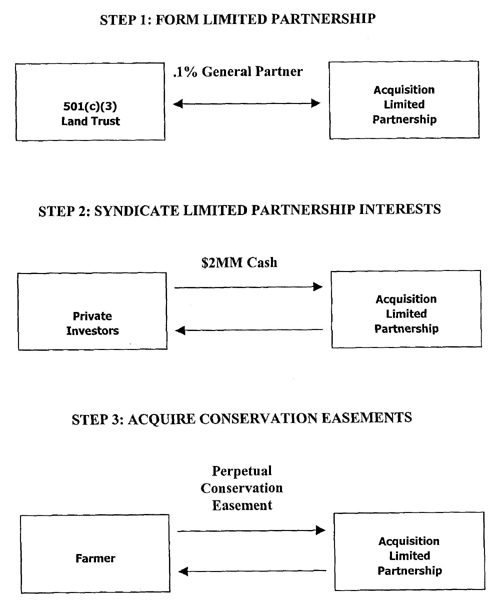



ANALYSIS
Landowner has property worth $1,100,000, if valued for development, but only $200,000 if valued as a farm. His basis in the farm property is $100,000. If Landowner sold the farm to developers he would recognize a gain of $1,000,000 and pay tax (state and federal) of $250,000, leaving him a net of $850,000, but no farm.
Instead, Landowner sells to Land Trust Acquisition Limited Partnership ("LTALP") a perpetual conservation easement that ensures the property will remain a farm. LTALP pays Landowner $900,000 in cash. Landowner recognizes a gain of $800,000 and pays tax of $200,000, leaving him with $700,000 in cash his $200,000 farm. LTALP could pay up to $18,000 in closing costs and could establish a $73,000 reserve fund to monitor and enforce the easement without exceeding the proposed legislation's percentage limitations.
Because LTALP incurred $991,000 of qualified conservation expenditures, the limited partners of LTALP (i.e., the private investors) would be entitled to tax credits of $990,009 (99.9% of $991,000). The revenue loss associated with the tax credits would be partially offset by the taxes paid by the sellers, and would be more than offset by the value of the conservation services offered by the land as well as the virtually inestimable value of protecting property for future generations of Americans to enjoy.